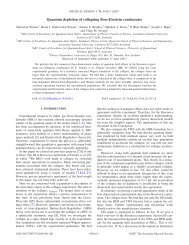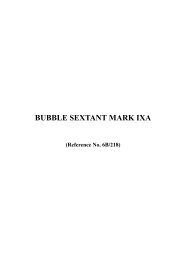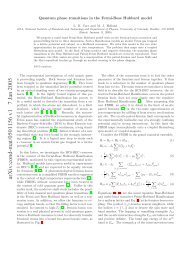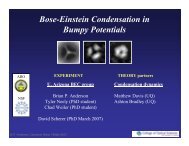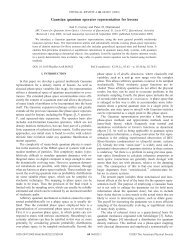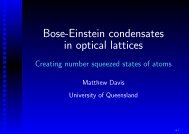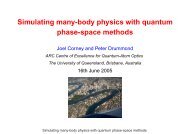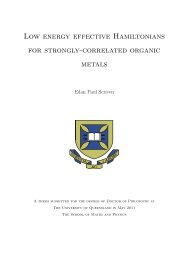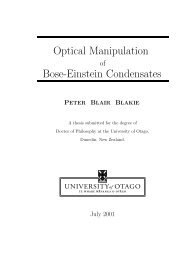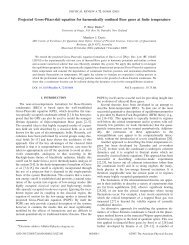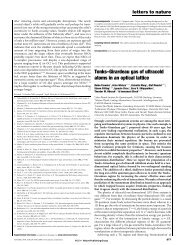Open Quantum Dynamics of Mesoscopic Bose-Einstein ... - Physics
Open Quantum Dynamics of Mesoscopic Bose-Einstein ... - Physics
Open Quantum Dynamics of Mesoscopic Bose-Einstein ... - Physics
You also want an ePaper? Increase the reach of your titles
YUMPU automatically turns print PDFs into web optimized ePapers that Google loves.
3. Homodyne measurements on a <strong>Bose</strong>-<strong>Einstein</strong> condensate3.2 Homodyne detection schemeFigure 3.1 illustrates the system under investigation here. One <strong>of</strong> the wells <strong>of</strong> the doublewellpotential sits in an optical cavity.A coherent field strongly drives the cavity atthe cavity frequency. We will assume that on the timescale <strong>of</strong> tunnelling oscillations, thecavity is heavily damped. The cavity field thus relaxes to the steady state on a much fastertimescale than the condensate dynamics. This enables us to make an adiabatic elimination<strong>of</strong> the cavity dynamics. We can assume that the cavity field is far <strong>of</strong>f resonance from anydipole transitions in the atomic species, so that the effect <strong>of</strong> the atoms is then entirelydispersive. The presence <strong>of</strong> the condensate shifts the phase <strong>of</strong> the cavity field by an amountproportional to the number <strong>of</strong> atoms in the cavity at any particular time. If the number<strong>of</strong> atoms in the cavity oscillates, so will the phase shift. Thus tunnelling <strong>of</strong> the condensatewill be manifest as a modulated phase shift in the optical field exiting the cavity.To detect this phase shift we consider a homodyne detection scheme.The opticalcavity resides in one arm <strong>of</strong> an interferometer that combines the exiting light with areference beam <strong>of</strong> the same frequency. The result falls on a photodetector, which recordsthe photocurrent. If there is a difference in atom number between the two condensates,then coherent tunnelling can occur and the homodyne current will be modulated at thetunnelling frequency.Assuming that the incoming light is detuned from any atomic resonance, the interactionHamiltonian is∫Ĥ I = −d 3 r ˆψ † (r)µg(r)â † â ˆψ(r), (3.2)where â, â † are the cavity field operators, g(r) is the intensity mode function and µ =g 2 d /4∆ is the coupling strength, with dipole coupling constant g d and optical detuning ∆.Averaging over the optical mode function gives the interaction energy in terms <strong>of</strong> thecondensate field operators c, c † :where χ is the interaction strength.Ĥ I = −χâ † âĉ † 1ĉ1= − N 2 χ↠â − χâ † âĴx, (3.3)If the optical mode has a beam waist w, and aGaussian pr<strong>of</strong>ile g(r) =cos 2 (kz)exp(−(x 2 + y 2 )/w 2 ) then the interaction strength isχ =µ2 √ 2(r 0 /w) 2 +1 . (3.4)62



